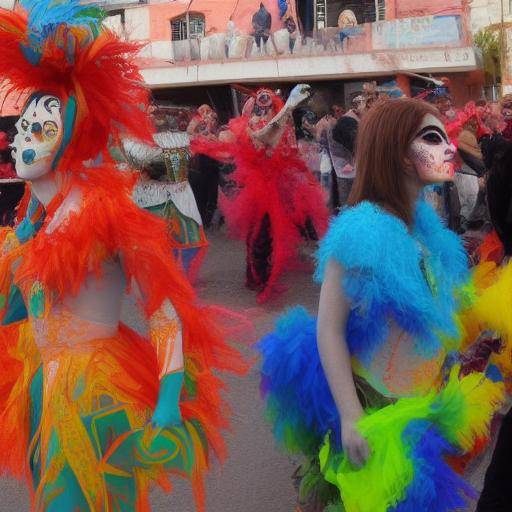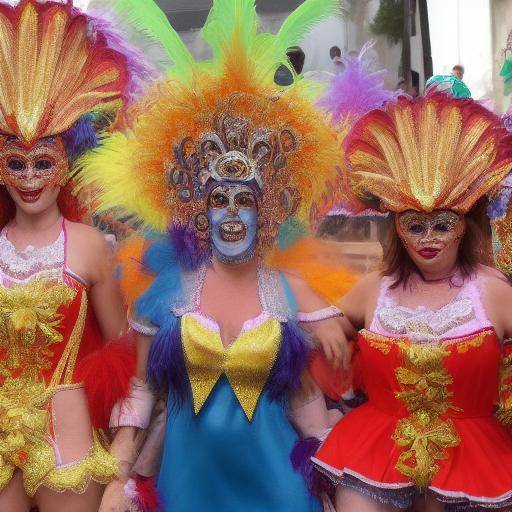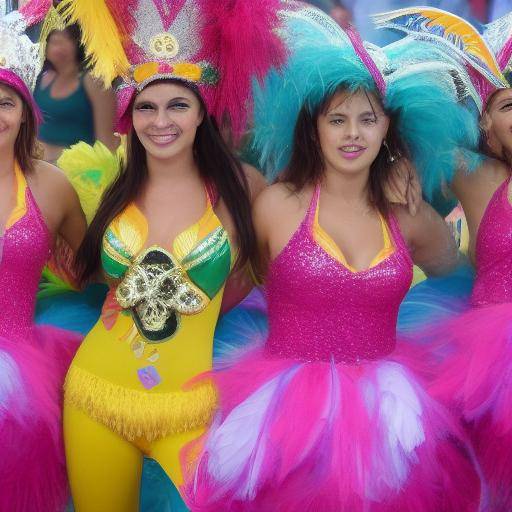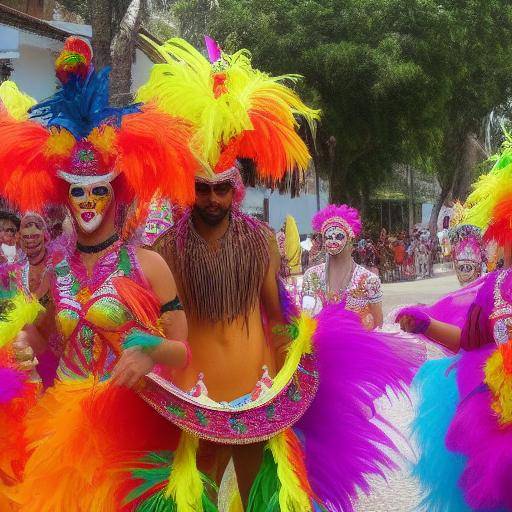
The Rio de Janeiro Carnival is one of the most emblematic celebrations in the world, known for its vibrant energy, dazzling parades and elaborate floats. Art plays a crucial role in this festival, not only at the aesthetic level, but also in terms of social cohesion and cultural promotion. This article explores the benefits of art in the Rio Carnival, current trends and challenges facing this artistic manifestation.
Benefits of Art in Carnival
Art in the Rio Carnival not only plays an aesthetic role, but also plays a key role in social cohesion and cultural promotion. Artistic creations foster a sense of belonging and pride in the community, while projecting to the world the diversity and cultural wealth of Brazil.
Social cohesion
- Sentence of Community: The preparation and celebration of carnival unite people from different social and economic sectors, promoting unity and teamwork.
- Cultural identity: The artistic expressions of carnival reflect the history and culture of Brazil, reinforcing national and local identity.
Cultural Promotion
- Global visibility: The art of the Rio Carnival attracts global attention, highlighting Brazilian creativity and talent.
- Tourism and Economics: The international attraction of carnival drives tourism and thus the local economy, creating jobs and generating income.
Current Trends and Challenges
As the Rio Carnival continues to evolve, art continues to experience new trends and challenges. The incorporation of innovative technologies in the creation of floats, the search for greater sustainability in the materials used for costumes and the inclusion of contemporary themes in artistic expressions are just some of the current trends that are shaping the art of the Rio Carnival.
Current trends
- Technology and Innovation:
- Technological carriages: The use of LED lights, animatronics and special effects to create more impressive and dynamic floats.
- Interactive Costumes: Integration of technology in costumes, such as lights and sounds, to improve the visual and hearing experience.
- Sustainability:
- Ecological materials: Use of recycled and sustainable materials in the manufacture of costumes and floats.
- Green practices: Implementation of sustainable practices in the production and organization of carnival to reduce environmental impact.
- Contemporary Issues:
- Social issues: Inclusion of current issues such as gender equality, diversity and social justice in artistic representations.
- Pop Culture: Influence of pop culture and global trends in the design of floats and costumes.
Challenges
- Preservation of traditions:
- Balance between Tradition and Modernity: Maintain the artistic traditions of carnival while incorporating modern innovations.
- Cultural Transmission: Ensure that younger generations understand and value the traditions of carnival.
- Accessibility:
- Social inclusion: Ensure that all people, regardless of their economic situation, can participate and enjoy the art of carnival.
- Costs: Manage high production costs without compromising carnival quality and accessibility.
Conclusion
Art is a fundamental pillar in the Rio Carnival, enriching the festive experience with its diversity, creativity and capacity to captivate audiences around the world. Through art, carnival not only celebrates the culture and history of Brazil, but also promotes social cohesion and national identity. Despite the challenges, current trends show a carnival that continues to evolve, adapting to new realities while keeping its traditional essence alive.
The carnival, with its carioca art and its festive creativity, persists as an emblematic celebration that transcends borders and continues to inspire generations with its unmatched visual splendor.
FAQs
How does art contribute to social cohesion in the Rio Carnival?
Art in the Rio Carnival promotes the sense of community and unity among people, promoting cultural identity and collective participation in the preparation and celebration of the event.
What current trends are shaping the art of the Rio Carnival?
Current trends include the incorporation of technology into floats and costumes, the use of sustainable materials and the inclusion of contemporary themes such as social issues and pop culture.
What are the main challenges for art in the Rio Carnival?
The main challenges include the preservation of artistic traditions against modernization and the need to ensure the accessibility of art to the entire community, managing the costs without compromising the quality of carnival.
How does the art of the Rio Carnival impact on cultural promotion and tourism?
The art of the Rio Carnival attracts global attention, highlighting Brazilian creativity and promoting tourism, which drives the local economy and creates jobs.
What role does sustainability play in the art of the Rio Carnival?
Sustainability is a growing trend in carnival, with an approach to the use of recycled materials and green practices to reduce environmental impact and promote a more ecological celebration.



